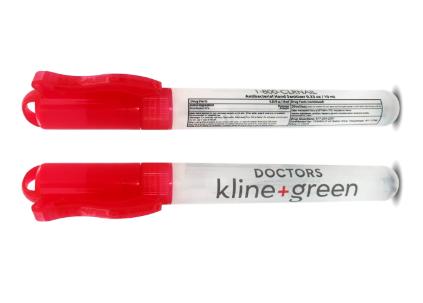How To Prevent Toenail Fungus
No one wants to experience toenail fungus (also called onychomycosis). However, it is relatively...
During the cold winter months, washing your hands properly is especially important to prevent spreading harmful bacteria. If you’re in a pinch or in between washes, hand sanitizer can serve as an excellent portable solution to keep your hands germ-free. However, just how effective is hand sanitizer at preventing specific diseases like the cold or flu virus? In the article, we’ll examine just how effective hand sanitizer is for protecting your health and hand hygiene.

While washing your hands properly is still very important, hand sanitizer allows you to keep your hands clean on-the-go in a variety of environments. As it turns out, alcohol-based hand sanitizer effectively kills off the influenza virus and cold bacteria on contact. It should be noted that this is more of a prevention method more than a way to help cure preexisting sickness. Hand sanitizer and washing hands, for that matter, are most effective as ways to prevent transmission of harmful bacteria. This is extremely useful, as many of the things we regularly come into contact with (doorknobs, cell phones, desks, etc.) are likely to have strands of bacteria on them. Sanitizing and washing your hands properly can kill off these harmful strands before they get into your system, making them excellent ways to prevent sickness. This is why you often see hand sanitizer made available for healthcare workers since it is used to reduce the potential for transmitting germs and infectious diseases, therefore helping to improve public health in healthcare settings.
Generally speaking, not on its own. While hand sanitizer is largely effective at targeting nasty common bacteria associated with the cold and flu, it won’t remove all contaminants on your hands that are likely to be eradicated through proper wash procedure. Whenever washing your hands, do so for at least 15 full seconds with warm water and mild soap. In between washes, the use of hand sanitizer can help prevent disease transmission even further.
Just like the way you wash your hands, the way you use hand sanitizer matters. According to Science Daily, the best way to use hand sanitizer is to rub it in between your hands for about 15 seconds. High-quality hand sanitizers with a higher level of alcohol content are likely to dry up on their own sooner, but just keep in mind that hand sanitizers can only protect the areas it has covered. Try your best rub sanitizer evenly and thoroughly across the surfaces of your hands, as you would while washing your hands. It’s also important to note that hand sanitizer can naturally make your hands feel somewhat dry due to their bacteria-fighting properties. If you struggle with dry skin, it may be a good idea to keep some moisturizing hand cream or lotion with you to use after using hand sanitizer. It is also recommended to apply Doctors Kline + Green HYDRATE after using a sanitizer to keep your nails fresh and hydrated.
Hence, hand sanitizer use is a great way to keep out nasty germs when you don’t have a sink available. However, not all hand sanitizers are created equal. You’ll want to look for a sanitizer that has at least 60% alcohol content to ensure that you’re properly protected. A great option is the Antibacterial Hand Sanitizer offered by Doctors Kline + Green. Not only are these portable pens perfect for hygienic travel, but they also contain 62% of ethyl alcohol which is proven to be safe and effective. Using this hand sanitizer will leave your hands feeling soft, clean, and most importantly, germ-free!

Though hand sanitizer shouldn’t be used as a replacement to hand-washing, it can be a great intermediary solution for when you don’t have access to a sink. Keeping your hands bacteria-free is a great way to proactively protect your health. With a high-quality hand sanitizer, you’ll be able to keep your hands healthy without sacrificing convenience.